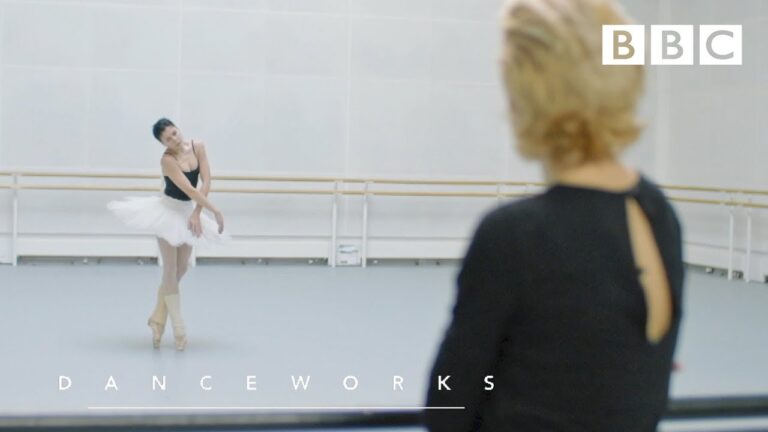Dance Therapist Job Description: Healing through Movement

Dance Therapist Job Description Template
Dance Therapist Job Description Dance therapy is a form of expressive therapy that combines movement and dance with psychological techniques to promote emotional, cognitive, and physical well-being. Dance therapists are trained professionals who use dance and movement as a means of healing and self-expression. Their job is to work with individuals or groups to address specific emotional or physical issues through dance. Responsibilities: – Assessing clients’ needs and determining appropriate dance therapy interventions. – Developing treatment plans tailored to individual clients’ goals and needs. – Conducting dance therapy sessions, both individually and in group settings. – Using a variety of dance and movement techniques to help clients express their emotions and improve their overall well-being. – Monitoring clients’ progress and adjusting treatment plans as necessary. – Collaborating with other healthcare professionals, such as psychologists and physical therapists, to provide comprehensive care for clients. – Providing education and support to clients and their families about the benefits of dance therapy. – Maintaining accurate and up-to-date documentation of clients’ progress and treatment plans. Qualifications: – Bachelor’s or master’s degree in dance therapy or a related field. – Certification as a dance therapist, obtained through the American Dance Therapy Association (ADTA). – Strong knowledge of dance and movement techniques. – Excellent communication and interpersonal skills. – Ability to work effectively with individuals from diverse backgrounds and age groups. – Empathy and compassion for clients who may be dealing with emotional or physical challenges. – Strong observation and assessment skills. – Ability to maintain professional boundaries and confidentiality. Overall, dance therapy is a rewarding profession that combines the power of movement and expression to help individuals improve their mental, emotional, and physical well-being. Dance therapists play a vital role in supporting clients on their journey towards healing and self-discovery.Dance Therapist Responsibilities
Dance Therapist Requirements
How Much Does A Dance Therapist Make?
Dance Therapist Salary
| Experience Level | Annual Salary |
|---|---|
| Entry Level | $40,000 – $60,000 |
| Mid-Career | $60,000 – $80,000 |
| Experienced | $80,000 – $100,000 |
| Senior Level | $100,000+ |
A dance therapist’s salary can vary depending on their experience level. Entry-level dance therapists typically earn between $40,000 and $60,000 per year. As they gain more experience and advance in their careers, their salaries can range from $60,000 to $100,000. Those who reach senior-level positions can earn salaries of $100,000 or more annually. It’s important to note that these figures are approximate and can vary based on factors such as location, employer, and additional qualifications.
Dance Therapist Salaries by Country
Top Paying Countries for Dance Therapist
| Country | Average Annual Salary (USD) |
|---|---|
| United States | $63,110 |
| Australia | $55,468 |
| Switzerland | $52,467 |
| Netherlands | $50,844 |
| Canada | $49,857 |
Dance therapists in various countries earn different salaries based on factors such as demand, cost of living, and government policies. According to available data, the top paying countries for dance therapists include the United States, Australia, Switzerland, the Netherlands, and Canada. In the United States, dance therapists earn an average annual salary of $63,110. Australia follows closely with an average salary of $55,468. Switzerland, the Netherlands, and Canada also offer competitive salaries ranging from $50,844 to $49,857. It is important to note that these figures may vary depending on experience, qualifications, and other individual factors.
A video on the topic Dance Therapist
Video Source : American Dance Therapy AssociationInterview Questions for Dance Therapist
1. What is dance therapy?
Dance therapy is a form of expressive therapy that uses movement and dance to promote emotional, cognitive, physical, and social integration of an individual.
2. What are the primary goals of dance therapy?
The primary goals of dance therapy include improving self-awareness, enhancing self-esteem, fostering emotional expression, promoting physical well-being, and facilitating interpersonal relationships.
3. How does dance therapy benefit individuals?
Dance therapy benefits individuals by providing a safe and creative outlet for self-expression, improving body awareness and coordination, reducing stress and anxiety, enhancing communication skills, and promoting overall well-being.
4. What qualifications are required to become a dance therapist?
To become a dance therapist, one typically needs a master’s degree in dance/movement therapy or a related field, along with supervised clinical experience and certification from the American Dance Therapy Association (ADTA).
5. How does a dance therapist assess a client’s needs?
A dance therapist assesses a client’s needs by observing their movement patterns, body language, and emotional expressions. They also conduct interviews and gather information about the client’s history and goals to develop an individualized treatment plan.
6. What are some common techniques used in dance therapy?
Some common techniques used in dance therapy include improvisation, mirroring, guided movement exploration, choreography, and dance/movement games. These techniques are adapted based on the client’s needs and abilities.
7. How does dance therapy differ from traditional talk therapy?
Dance therapy differs from traditional talk therapy by incorporating movement and nonverbal expression as the primary means of communication. It allows individuals to access and process emotions that may be difficult to express verbally.
8. Can dance therapy be used with individuals of all ages?
Yes, dance therapy can be used with individuals of all ages, from young children to older adults. It is adapted to meet the specific developmental and physical needs of each age group.
9. In what settings can dance therapy be practiced?
Dance therapy can be practiced in a variety of settings, including hospitals, mental health clinics, schools, rehabilitation centers, nursing homes, and community centers. It can be offered in individual or group sessions.
10. What are the potential career paths for a dance therapist?
A dance therapist can work in various settings, such as healthcare facilities, educational institutions, private practice, or community organizations. They can also pursue research, teaching, or supervisory roles within the field.






